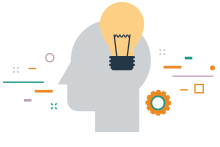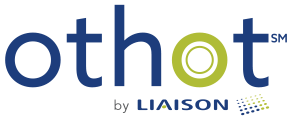It’s time to be thankful—and I am—for the abundance of crazy unique data, hard business questions and super smart people. Since this is the time of year in the United States that we stop for a few days and think about all the things we are thankful for, I wanted to focus this post on three things related to data science that I am thankful for: good data, super nasty hard questions and really, really smart people. Please note that doesn’t minimize all the normal things that I am thankful for, my family, the people who I love and the few who love me, health, peace in the world (by the way we need to do better here), etc., but as it relates to data science this is my list.
Data, Data, Data.
To liberally paraphrase Fletch, “Hey! It's all [data] nowadays.” 1 So, thank you #1 goes to the abundance of data in the world today and the ability to collect and analyze that data. It’s not just about data, but about that it is everywhere and can surprise us with what variable actually can drive a result.
And the stuff can be super useful, and we sometimes do not even notice. Here is an example of what I mean -- the Morcambe Missile, also known as John McGuinness, is the Michael Jordan of the International Isle of Man TT. The TT is an annual motorcycle road race held traditionally on the Isle of Man. This is folks doing a nearly 40 mile road course at average speeds of over 130 miles per hour. 2 McGuinness has won the thing a ton of times—he is insanely good.3 But why and how? A data science team from EMC, with the help of Alpinestars (these folks make sportswear) and sensor experts from Freescale Semiconductor took McGuinness’ bike and gear and covered them with sensors (there were temperature monitors in McGuinness undergarments, even) in an effort to figure out why this guy is the superman of what has been called the most dangerous race in the world. “Fifty sensors measured everything from front and rear wheel velocities to throttle usage; banking angles to gear changes; acceleration and braking rates to suspension travel. The sensors in his suit even allowed them to analyze his position on the bike at different points of the course.” 4
So what did they find out? What was the key? McGuinness’ keen balance on the bike and his technical expertise, understanding of the course and the track? Actually, not it at all. It is that McGuinness “[i]t turns out .. really does have ice in his veins, figuratively speaking. Even bombing down roads at top speeds of over 200mph, his heart rate is much lower than might be expected.”5 "He was only at 120bpm [beats per minute] - well within the aerobic range - even at very high speeds," Mike Foley, EMC's senior director of data science. 6 "As his heart rate was much lower, his oxygen intake was lower," he says. "He was under less stress, calmer, and so more consistent in his performance, experiencing less fatigue than other riders." 7
As it turns out, stress leads to tiredness, which leads to errors, which leads to not performing well, or even worse. The test also was a great data science experiment. As it seemed a number of the sensors—given the harsh conditions—failed. So EMC crowd sourced the “data science model” in an effort to see who could analyze and present the data in the most common sense fashion. 8 What they found was that only about 15 variables mattered. For example, a 1% change in banking angle is pretty important.9 But most importantly Morcambe Missile is just one cool, steady-as-you-go dude. In short, data is awesome. Not all data is created equal. But you have to build and run the right model (or have an automated solution that can do it for you) to know for sure. So thank you data.
Hard Questions.
To liberally paraphrase, Ben Horowtiz, the hard thing about hard questions, is that they are hard.10 But the neat thing about hard business questions is that you can, with awesome talent and the proper process, turn those nasty problems into data science questions. So what do I mean. Let’s take higher education. “Colleges are facing a perfect storm that could shutter hundreds of them and leave many more wondering how to survive.”11
"Out-of-control tuition increases have been the stuff of parents’ nightmares and media headlines for years. The Bureau of Labor Statistics pegs it at a 1200% increase since 1978, far higher than health care’s 634% rise, or the Consumer Price Index’s 279% increase over the same period."12 The increase in cost has created has resulted in a every increasing student debt burden. CNBC reports “millions of students and families every year are forced deeper into debt to make up the difference—around $100 billion a year." 13 For the most part, the demand for education was unfazed by the increased cost. "But after decades of expanding enrollments, applications have begun tapering off. College enrollment peaked in 2011.”14
It is a nasty mix of factors facing some of the most vital institutions in our country, as our colleges and universities and technical schools are the backbone to the world’s most successful market economy. One of the first issues to tackle, is how to continue to attract and retain qualified students who can graduate and go on to thrive and ultimately support that school as a graduate? But competition is fierce and the even harder question is how to continue to attract and retain students in a more cost-effective, efficient and smart way. That is a super important question (how to attract and retain your “customers”) facing the higher education industry, estimated at around $1.3 trillion annually—9% of the GDP.15
So thank you hard business problems that can – with a ton of hard work—become data science solutions.
Smart People
At Othot we have smart people. Do not get me wrong, we have not cornered the market on all of them, but we sure do have a lot. But I am very lucky to have had the chance to create something with these folks. So, thank you Andy for great leadership, passion, vision and a recently reminding me that the way you win games is field position, and first downs, not what the fans want to see. Common sense wins. And you remind me of that every day. So, thank you John, for reminding me that being a great leader and building something is as much about the little things as the genius things—you can say nothing and still be the smartest guy in the room. Dr. Mark, thank you for your tireless efforts and looking at the world through the lens of classifications, regressions, matching, clustering, causation, etc. Thank you Dave for wanting to sell, and then sell more. And Coen, Ashton, Alexis, Kerstin, Doman, JJ, Jonathan, Claire, Grey, Mark S., Josh, Anna and Matt, thank you for all the effort and great work. So thank you smart Othot people.
Sources:
- 1 http://www.imdb.com/title/tt0089155/quotes
- Tracking the 'Morecambe Missile' two-wheeled speed demon, http://www.bbc.com/news/business-34463981.
- 2 Isle of Man TT 2015: John McGuinness rides his luck in chasing a Senior record http://www.independent.co.uk/sport/motor-racing/isle-of-man-tt-2015-john-mcguinness-rides-his-luck-in-chasing-a-senior-record-10314506.html
- Tracking the 'Morecambe Missile' two-wheeled speed demon, http://www.bbc.com/news/business-34463981.
- Id.
- Id.
- Id.
- Id.
- Id.
- Id.
- The Hard Thing About Hard Things: Building a Business When There Are No Easy Answers, Ben Horowitz
- A Perfect Storm Is Heading Toward Higher Education, http://time.com/3720815/college-costs-parent-dissatisfaction/
- Id.
- Why does College Cost So Much, http://www.cnbc.com/2015/06/16/.
- Id.
- A Perfect Storm Is Heading Toward Higher Education, http://time.com/3720815/college-costs-parent-dissatisfaction/

Jeremey Garvey




